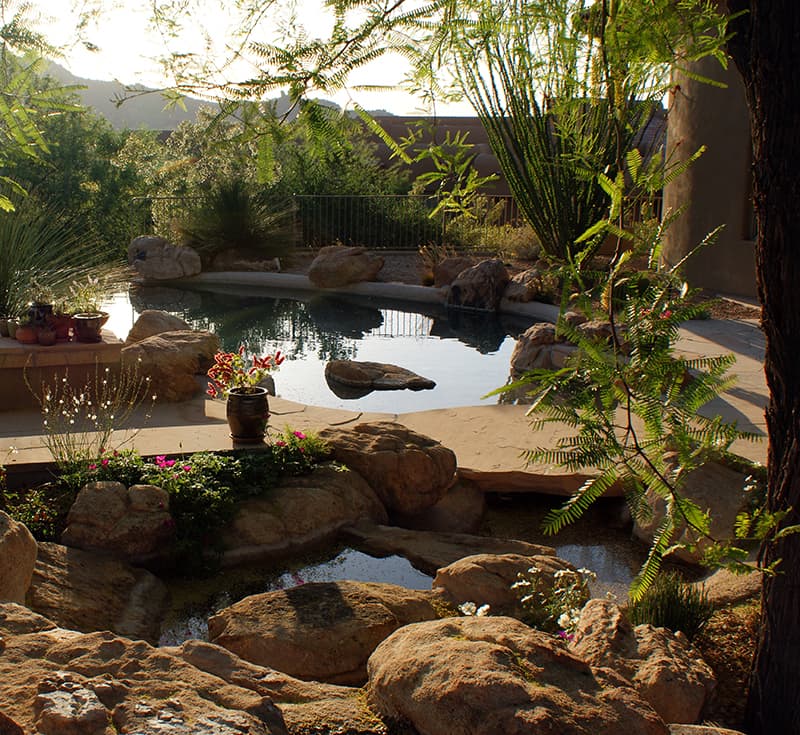Landscaping with Style
Finalize Your Plan
Design
Re-evaluating Your Preliminary Design
If you have the good fortune of developing a plan that falls below your budget, consider the following options:
- Spend the surplus on upgraded irrigation system components.
- Spend the surplus on upgraded hardscape materials.
- Add a feature you did not include in the preliminary plan because you thought it would be too expensive.
- Set aside the surplus amount for future additions or modifications to your landscape.
If your ultimate landscape design has exceeded your budget, consider these options:
- Scale back the original plan by excluding one or more features you can live without.
- Reduce the cost by purchasing smaller trees.
- Purchase fewer services and do more of the work yourself.
- Retain your complete plan and install it in phases.

Phasing In
Phasing in a landscape means installing it in stages rather than all at once. There are several advantages to retaining the landscape plan as you conceived it originally.
First, you can install each phase of your landscape with the knowledge that, eventually, you will have exactly what you want. You also will be able to concentrate on installing high quality plants and materials during each phase. You won't have to cut corners or settle for something you don't really like.
Phasing in your landscape also gives you some extra time—to install the components of each phase carefully and properly, to pre-shop for items to be installed during the next phases, to learn to maintain the existing components of your landscape and, of course, to save up for the supplies and materials needed for future phases.
How to Approach Phasing In
1. Analyze and prioritize
- Identify the essential elements on your landscape plan and prioritize them with numbering. During the process of prioritizing landscape elements, consider those elements that will be the easiest to add or move and those that will be the most difficult.
- Ask yourself questions like, "Will I be willing and able to move this play structure or add this planter later?" Identifying and prioritizing these elements accordingly will help to ease installation of items earmarked for future phases.
2. Put irrigation and grading first
- It is easiest and most cost effective to complete all grading activities at once, before installing the landscape.
- As a general rule, it is easier to install all of the major components of the irrigation system, such as the poly tubing or PVC pipe, at the same time. Therefore, they should be included in the first phase of your installation.
3. Maintain Access
- Try not to block gates or build fences or walls that will hinder installation of landscape elements planned for later phases.
- Put sleeves under sidewalks or block outs (also called stub outs) in walls to make way for features, such as wiring for lighting, to be added in future phases.
Draw the Working Design
At this point, you should have gathered all of the information needed to finalize the landscape design and irrigation plan.
- If you have made more than a few minor changes, you probably will want to redraw the preliminary plan.
- If you have decided to phase in portions of the landscape, note your priorities on the working design.
Make some copies of the completed working design. It's easy to lose or damage landscape plans, so keep a few extras on hand for future reference. If you have decided not to make any modifications to the preliminary drawings, then it's time to start planning your installation.
